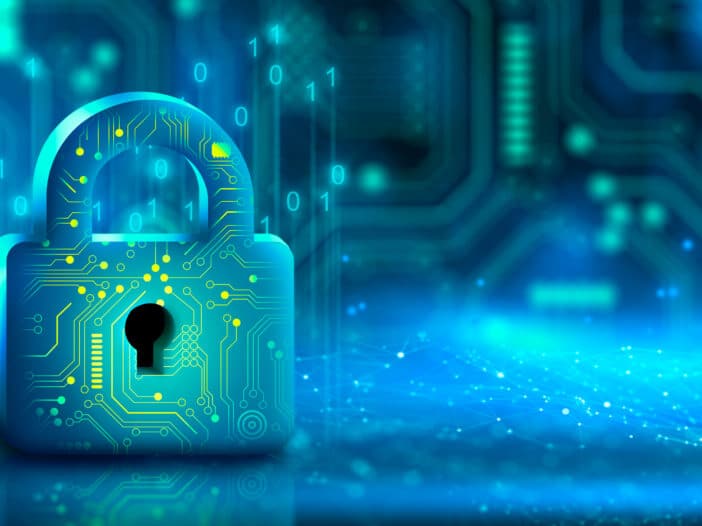
Did you know that in 2023 there was a cyberattack on a business every 39 seconds? In today’s ever-connected world, cybersecurity is no longer an optional add-on, it’s a critical defense. Our personal information, financial data, and even our identities are constantly under threat from cybercriminals.
By understanding some key cybersecurity terms, you can be better equipped to protect yourself online. This blog will introduce you to essential concepts and equip you with the knowledge to navigate the digital world more safely.
Cybersecurity Terms and Definitions
Here are some essential cybersecurity terms you should know:
- Authentication: The process of verifying a user’s identity before granting access to a system or data. This often involves entering a username and password but can also include multi-factor authentication (MFA) which requires an additional verification step, like a code sent to your phone.
- Multi-Factor Authentication (MFA): An extra layer of security that requires users to provide more than just a username and password to access a system. This could involve entering a code sent to your phone, using a fingerprint scanner, or answering a security question. MFA significantly reduces the risk of unauthorized access, even if a cybercriminal obtains your password.
- Authorization: Once a user is authenticated, authorization determines what permissions they have within a system. For example, an employee might be authorized to access company files related to their specific job role, but not to access sensitive financial data.
- Encryption: The process of scrambling data to make it unreadable by anyone who doesn’t have the decryption key. Encryption is essential for protecting sensitive information both in transit and at rest, such as when it’s stored on a hard drive.
- Firewall: A security barrier that controls incoming and outgoing network traffic. A firewall can be hardware, software, or a combination of both, and it helps to block unauthorized access attempts and malicious traffic.
- Malware: Short for “malicious software,” malware is any program or code designed to harm a computer system. This includes viruses, worms, Trojan horses, spyware, and ransomware.
- Phishing: A type of social engineering attack where cybercriminals attempt to trick victims into revealing personal information, such as passwords or credit card numbers. Phishing attacks often involve emails or text messages that appear to be from legitimate sources, such as banks or social media companies.
- Vulnerability: A weakness in a computer system, network, or application that can be exploited by cybercriminals. Software bugs, weak passwords, and misconfigured systems can all create vulnerabilities.
- Patch: A piece of code that fixes a security vulnerability in a software program. It’s important to keep your software up to date with the latest patches to protect against known vulnerabilities.
- Denial-of-Service (DoS) Attack: An attempt to overload a website or server with traffic, making it unavailable to legitimate users. Distributed Denial-of-Service (DDoS) attacks involve using a network of compromised computers to launch the attack.
- Ransomware: A type of malware that encrypts a victim’s files, making them inaccessible. Ransomware attackers then demand a ransom payment in exchange for the decryption key. Never pay a ransom without professional guidance, as there is no guarantee you will regain access to your files, and you may even be targeted again.
This is just a sampling of important cybersecurity terms. By familiarizing yourself with these terms and concepts, you can make informed decisions about how to protect yourself online.
Don’t Be Caught Off Guard: Consider Cyber Insurance
While implementing strong cybersecurity practices significantly reduces your risk of a cyberattack, it doesn’t eliminate it entirely. In today’s digital landscape, even the most prepared organizations can be targeted. This is where cyber insurance comes in.
Cyber insurance is a type of insurance policy that helps businesses and individuals financially recover from a cyberattack. It can cover a variety of expenses, such as:
- Data breach notification: The costs associated with notifying customers or clients about a data breach, including legal fees and credit monitoring services.
- Forensic investigation: Identifying the source and scope of the cyberattack.
- Data recovery: The costs associated with recovering lost or compromised data.
- Business interruption: The loss of revenue due to a cyberattack that takes your systems offline.
- Cyber extortion: The costs associated with responding to a ransomware attack, such as the ransom itself or the cost of negotiating with attackers.
Cyber insurance can provide valuable peace of mind and help you get back on your feet quickly after a cyberattack.
Diamond IT’s Cybersecurity Solutions
Don’t let the cost of a full-time CISO hold your business back from robust cybersecurity. Diamond IT offers vCISO services, providing you with access to a virtual Chief Information Security Officer. Our vCISO will offer strategic guidance and oversight, helping you take a proactive approach to building defenses and ensuring you’re prepared for cyber threats. This aligns perfectly with Diamond IT’s comprehensive cybersecurity solutions, designed to fortify your business.
Here are a few things included in Diamond IT’s vCISO services:
- Security assessments and vulnerability scans: We can identify security weaknesses in your systems and networks before cybercriminals exploit them.
- Employee security awareness training: We can help your employees learn how to identify and avoid cyber threats.
- Dark Web Monitoring & Reporting: We can monitor the dark web for mentions of your company’s data, helping you identify and respond to potential breaches quickly.
- Compliance Framework Alignment: We can help you align your cybersecurity posture with recognized industry frameworks, ensuring you meet industry best practices and regulatory requirements.
- Security Roadmap: We can work with you to develop a customized security roadmap that outlines your cybersecurity goals and the steps needed to achieve them.
- Insurance Review: We can review your cyber insurance policy to ensure you have adequate coverage in the event of a cyberattack.
Contact us today to learn more about protecting your business.